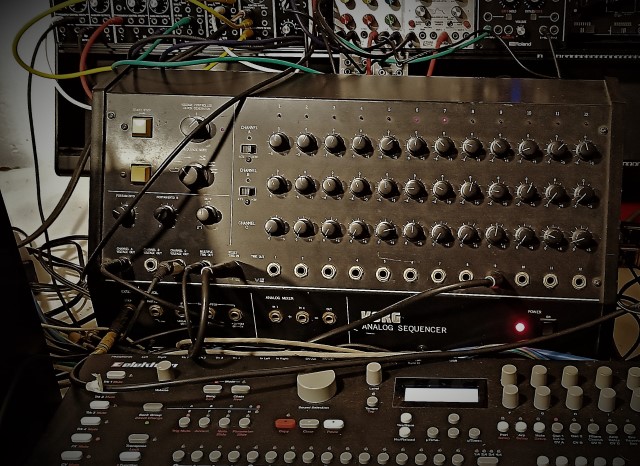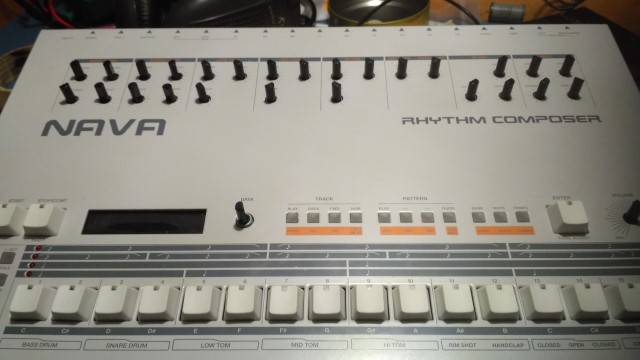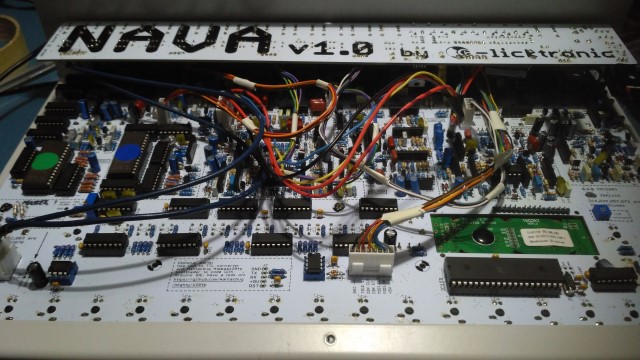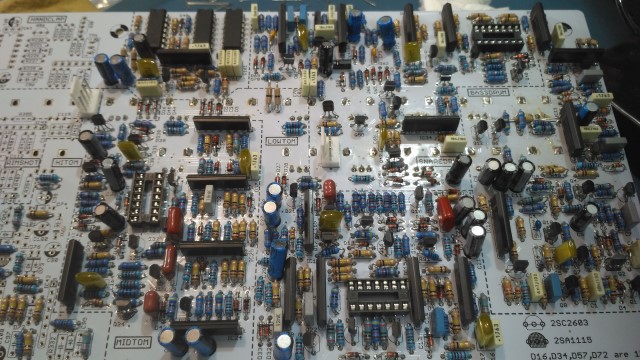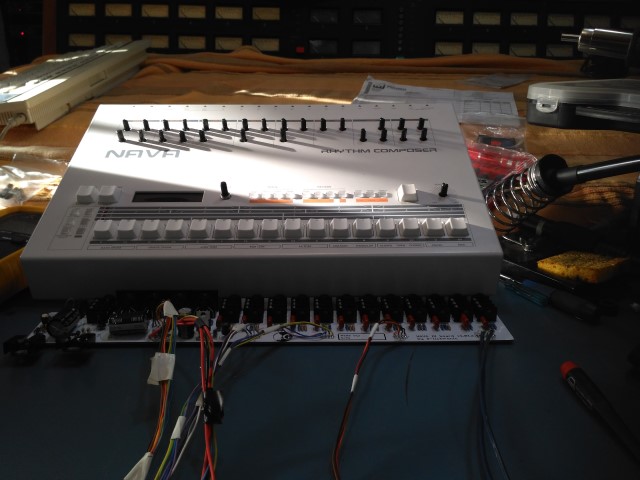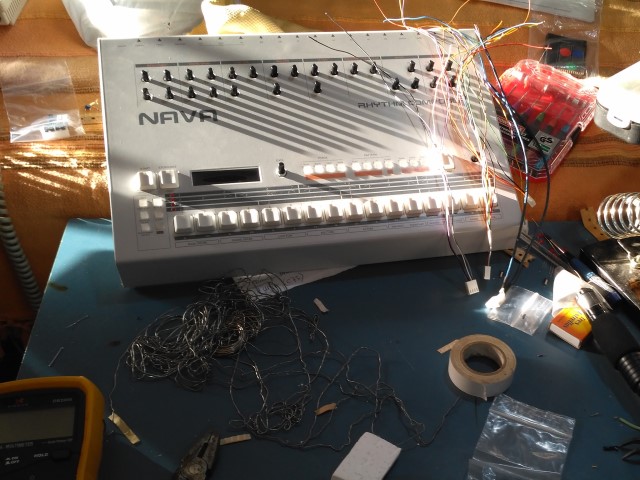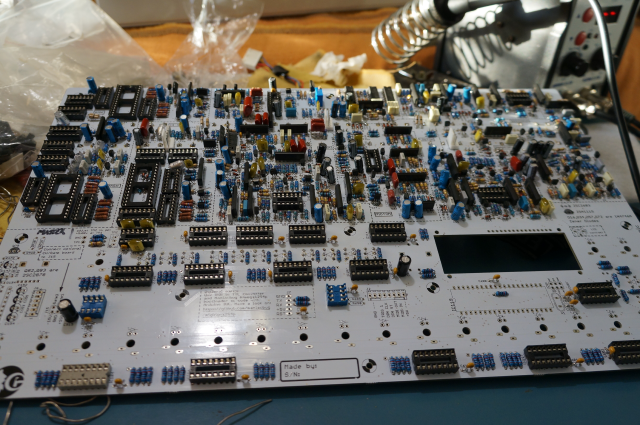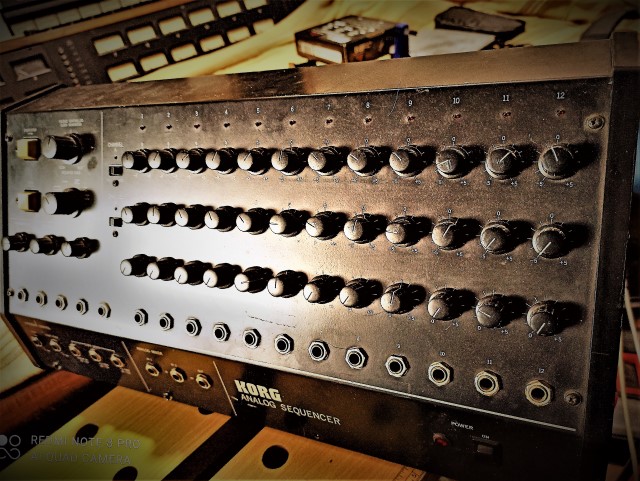
I recently discovered to my horror, that my sequencer, the old KORG SQ-10 could no longer be synced to MIDI through the KENTON Pro2 MIDI/CV interface’s ARP CLOCK signal, as I used to always do.
With the useful MS-50’s VU meter, I could see the interface voltages arriving in good health, but no way, the old sequencer didn’t want to go back to work and follow the sync signals.
Time to get back to the action with another “on the field” and completely DIY repair!
Opening an instrument of almost 40 years ago is always pretty annoying and time consuming! If there is something that certainly demonstrates the evolution made in hardware production, it is, apart from the standardization, certainly hardware and enclosures design:
Old machines often have enclosures that take a lot of time to open and inspect for maintenance. The KORG SQ-10 ANALOG SEQUENCER, has an infinite number of small screws to align with the frames and it is very easy to go wrong and have to disassemble a panel again to make everything fit. It is certainly better to have an electric screwdriver and a lot of patience.
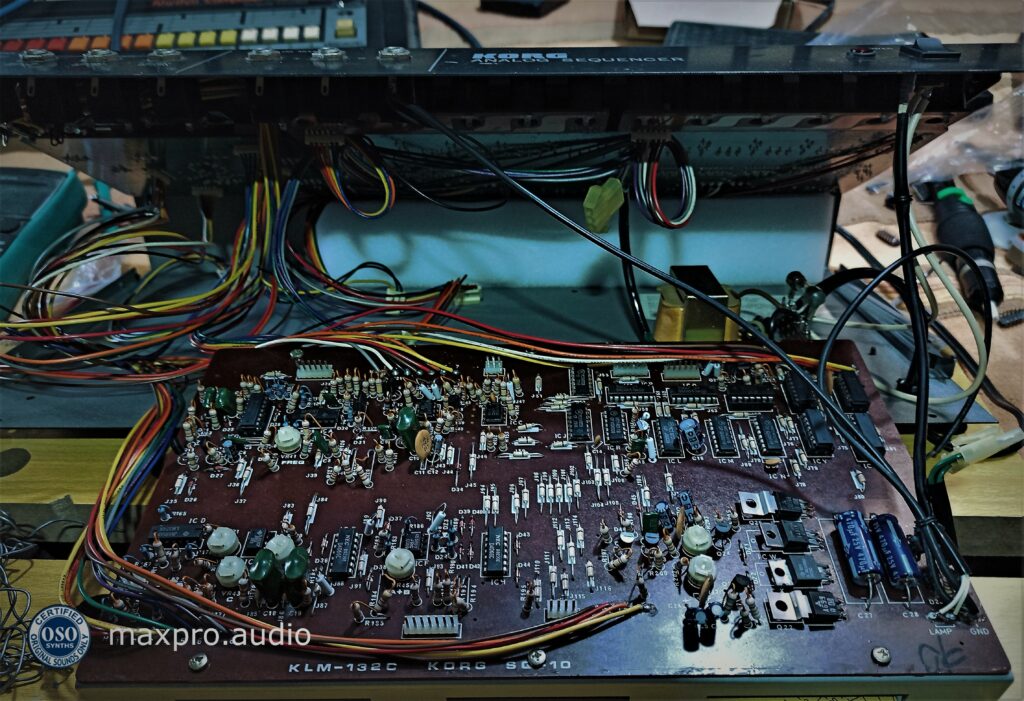
At a first analysis of the circuit board, no current could reach the negative 7.5v rail test point. Restored the voltage after having changed a couple of power transistors and electrolytic capacitors, with disappointment, I noticed the sequencer still couldn’t sync to the trig sent by the Roland TR-808 electronic drum machine. It has been necessary to swap some transistors, replace some electrolytic capacitors and check a few integrated circuit chips, in the areas of the CONTROL and RESET circuit, to have back the sequencer to syncing to the main trig, mission accomplished! :D
Testing the machine a little further, I discovered a very interesting function, I had never tried before:
By sending the ARP CLOCK signal in the START / STOP jack, instead of the usual STEP input and selecting the second loop mode in the front panel, it is possible to loop a variable number of notes, all in the same time interval (one beat), up to the maximum of 12 steps. This allows, to play with unusual and odd sequences, still being always synced in time.
The CLOCK SPEED LINEAR IN jack allows you to control the number of notes emitted, remotely. By connecting it to an LFO or an envelope generator, it is possible to create really complex patterns.
Really an excellent analog sequencer, KORG should consider building a remake of the SQ-10, soon!
